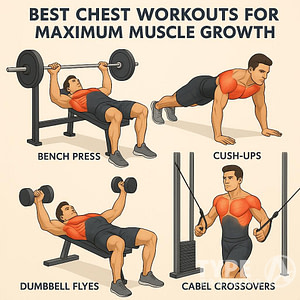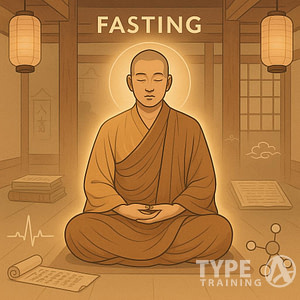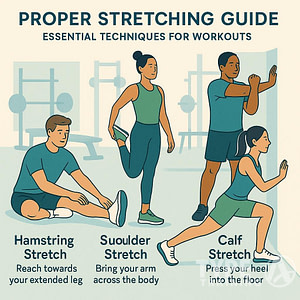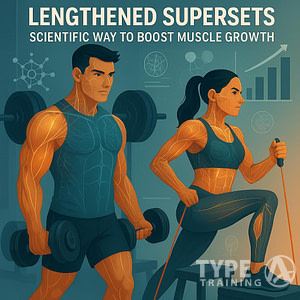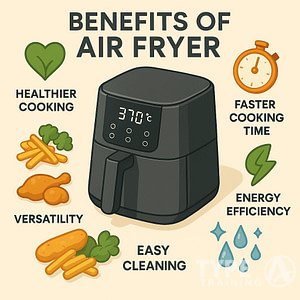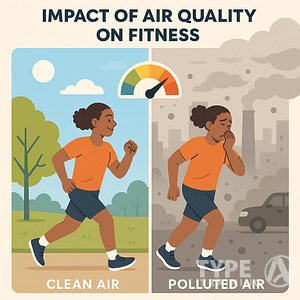As a woman over 50, you may be experiencing changes in your body that you haven’t encountered before. It’s important to understand the specific health concerns that women face as they age, so you can take steps to prevent or manage any issues that may arise. In this article, we’ll discuss some of the most common health challenges that women over 50 may face and offer tips for maintaining good health.
One of the most significant health concerns for women over 50 is heart health and blood pressure. As we age, our blood vessels become less flexible, which can lead to high
Bone health and osteoporosis are also significant concerns for women over 50. As we age, our bones become less dense, which can lead to fractures and other injuries. Menopause can also have a significant impact on your body, leading to hot flashes, vaginal dryness, and other symptoms. We’ll discuss the effects of menopause in more detail later in this article. We’ll also cover the best exercises for specific health concerns and how to modify exercises for joint pain and other health concerns.
Key Takeaways
- Women over 50 face specific health challenges, including heart health, joint health, diabetes, and bone health.
- Menopause can have a significant impact on your body, leading to a variety of symptoms.
- Exercise is an essential component of maintaining good health as you age, but it’s important to modify your routine to accommodate any health concerns you may have.
Understanding Specific Health Concerns for Women Over 50
Popular posts:
Turning 50 is a significant milestone in a woman’s life. It marks the beginning of a new phase of life that brings with it a unique set of health challenges. Here are some of the common health challenges that women face after turning 50.
Menopause
Menopause is a natural biological process that marks the end of a woman’s reproductive years. It usually occurs between the ages of 45 and 55 and is characterized by a decrease in the production of estrogen and progesterone hormones. This decrease can lead to a variety of symptoms, including hot flashes, night sweats, mood swings, and vaginal dryness.
Osteoporosis
Osteoporosis is a condition that causes bones to become weak and brittle. Women are at a higher risk of developing osteoporosis after menopause due to the decrease in estrogen levels. This condition can increase the risk of fractures, especially in the hip, spine, and wrist.
Heart Disease
Heart disease is the leading cause of death among women in the United States. After menopause, women are at a higher risk of developing heart disease due to the decrease in estrogen levels. Other risk factors include high
Breast Cancer
Breast cancer is a significant concern for women over 50. While breast cancer can occur at any age, the risk increases as women get older. Regular mammograms and breast exams can help detect breast cancer early when it is most treatable.
Health Challenges After 50 Table
| Health Challenge | Description |
|---|---|
| Menopause | Decrease in estrogen and progesterone hormones leads to symptoms such as hot flashes, night sweats, mood swings, and vaginal dryness. |
| Osteoporosis | Bones become weak and brittle, increasing the risk of fractures, especially in the hip, spine, and wrist. |
| Heart Disease | The leading cause of death among women in the United States. Risk factors include high |
| Breast Cancer | Risk increases as women get older. Regular mammograms and breast exams can help detect breast cancer early. |
In conclusion, women face several health challenges after turning 50. Understanding these challenges and taking steps to prevent them can help women lead healthy and fulfilling lives. Make sure to speak with your healthcare provider about any concerns you may have and to have regular check-ups to ensure optimal health.
Heart Health and Blood Pressure
As a woman over 50, it is important to be aware of your heart health and
Blood Pressure
High
You should aim to keep your
Cholesterol
Cholesterol is a waxy substance that can build up in your arteries and increase your risk of heart disease. There are two types of cholesterol: LDL (bad) cholesterol and HDL (good) cholesterol.
You should aim to keep your LDL cholesterol below 100 mg/dL and your HDL cholesterol above 50 mg/dL. Eating a healthy diet, exercising regularly, and not smoking can all help to improve your cholesterol levels.
High-Risk and Low-Risk Exercises for Heart Health
Exercise is important for maintaining heart health, but it is important to choose the right types of exercise based on your level of risk. Here are some examples of high-risk and low-risk exercises:
| High-Risk Exercises | Low-Risk Exercises |
|---|---|
| Running | Walking |
| High-impact aerobics | Low-impact aerobics |
| Jumping jacks | Step aerobics |
| Basketball | Swimming |
| Football | Cycling |
Cardiovascular Disease
Cardiovascular disease is a general term for conditions that affect the heart and blood vessels. This includes heart disease, stroke, and peripheral artery disease.
You can reduce your risk of cardiovascular disease by maintaining a healthy lifestyle. This includes eating a healthy diet, exercising regularly, not smoking, and managing your
By taking care of your heart health and
Joint Health and Arthritis
As you age, your joints may start to experience wear and tear, leading to joint pain and stiffness. Arthritis is a common condition among women over 50, and it can significantly impact your quality of life. Here are some key things you should know about joint health and arthritis:
Types of Arthritis
There are over 100 different types of arthritis, but the two most common types are osteoarthritis and rheumatoid arthritis. Osteoarthritis is a degenerative joint disease that happens when the tissues that cushion the ends of the bones within the joints break down over time. Rheumatoid arthritis is an autoimmune disease that causes your immune system to attack the lining of your joints, leading to inflammation and joint damage.
Symptoms of Arthritis
The symptoms of arthritis can vary depending on the type of arthritis you have, but common symptoms include joint pain, stiffness, swelling, and decreased range of motion. You may also experience fatigue, fever, and weight loss with rheumatoid arthritis.
Risk Factors for Arthritis
Several factors can increase your risk of developing arthritis, including age, genetics, obesity, and joint injuries. Women are also more likely to develop arthritis than men, and the risk increases with age.
Prevention and Treatment of Arthritis
While there is no cure for arthritis, there are several things you can do to manage your symptoms and improve your joint health. Maintaining a healthy weight, staying physically active, and eating a balanced diet can all help prevent and manage arthritis. You may also benefit from physical therapy, medications, or joint replacement surgery if your arthritis is severe.
In summary, arthritis is a common condition among women over 50 that can significantly impact your joint health and quality of life. By understanding the types of arthritis, symptoms, risk factors, and prevention and treatment options, you can take steps to manage your arthritis and improve your joint health.
Diabetes and Exercise for Women over 50
If you have diabetes, prediabetes, or type 2 diabetes, exercise is an essential component of managing your blood sugar levels. Exercise can help improve your overall fitness, manage your weight, reduce your risk of heart disease and stroke, and improve your well-being. However, diabetes and exercise pose unique challenges, especially for women over 50.
Monitoring Your Blood Sugar
It is crucial to monitor your blood sugar levels before, during, and after exercise. Exercise can cause your blood sugar to drop, especially if you take insulin or certain medications. You should test your blood sugar before and after exercise to ensure that it stays within a safe range. If your blood sugar is too low, eat a snack or drink juice to bring it back up before continuing with your exercise routine.
Ideal Time for Exercise
Doctors suggest that diabetics should exercise at a certain time of day. Any time between one and three hours after a meal is ideal. Before exercising, you should always test your blood sugar. Your blood sugar level should be above 100mg/dL before exercising to reduce the risk of hypoglycemia.
Types of Exercise
There are many types of exercise that can help manage diabetes, including personal training, yoga, and Pilates. These low-impact exercises can help improve your strength, flexibility, and balance. Additionally, they can help reduce stress and improve your overall well-being.
Benefits of Exercise
Regular exercise provides a great array of health benefits, including lowering
In summary, exercise is a crucial component of managing diabetes for women over 50. By monitoring your blood sugar, exercising at the right time of day, and incorporating low-impact exercises into your daily routine, you can improve your overall health and well-being. Remember to always consult with your doctor before starting any exercise routine.
Bone Health and Osteoporosis
As a woman over 50, you may be at risk of developing osteoporosis, a condition that causes bones to become weak and brittle, making them more likely to break. Osteoporosis affects mostly older women, but prevention starts when you are younger. Here are some things you can do to maintain healthy bones and prevent osteoporosis.
Get Enough Calcium and Vitamin D
Calcium and vitamin D are essential for building and maintaining healthy bones. Women over 50 should aim for 1,200 milligrams of calcium and 800 to 1,000 international units of vitamin D per day. Calcium can be found in dairy products, leafy greens, and fortified foods like orange juice and cereal. Vitamin D can be found in fatty fish like salmon and tuna, as well as fortified foods and supplements.
Exercise Regularly
Exercise can help build and maintain bone density, which can help prevent osteoporosis. Weight-bearing exercises like walking, jogging, and dancing are particularly effective. Resistance training with weights or resistance bands can also help build bone density. Yoga, Pilates, and other low-impact exercises can help improve balance and flexibility, which can reduce the risk of falls and fractures.
Avoid Smoking and Excessive Alcohol Consumption
Smoking and excessive alcohol consumption can both increase the risk of osteoporosis. Smoking can interfere with the body’s ability to absorb calcium, while excessive alcohol consumption can interfere with the body’s ability to form new bones. If you smoke, quitting can help reduce your risk of osteoporosis. If you drink, limit your consumption to no more than one drink per day.
Talk to Your Doctor About Medications
If you have been diagnosed with osteoporosis or are at high risk of developing the condition, your doctor may recommend medications to help prevent bone loss and reduce the risk of fractures. These medications may include bisphosphonates, hormone therapy, or other drugs. Talk to your doctor about the risks and benefits of these medications and which one may be right for you.
By taking steps to maintain healthy bones, you can reduce your risk of osteoporosis and fractures. Regular exercise, a healthy diet, and avoiding smoking and excessive alcohol consumption can all help keep your bones strong. Talk to your doctor about your bone health and any concerns you may have.
Menopause and its Effects on Your Body
Menopause is a natural biological process that marks the end of menstruation in women. It usually occurs between the ages of 45 and 55, with the average age being 51 in the United States. During menopause, your body goes through significant changes that can affect your physical and emotional health.
Hot Flashes and Vaginal Dryness
Hot flashes are one of the most common symptoms of menopause. They are characterized by a sudden feeling of warmth that spreads over the upper body, often accompanied by sweating and a rapid heartbeat. Vaginal dryness is another common symptom of menopause, which can cause discomfort during sexual intercourse.
Estrogen Levels
During menopause, your body produces less estrogen, which can lead to a number of health problems. Low levels of estrogen can increase your risk of heart disease, stroke, and osteoporosis. It can also cause changes in your skin and hair, making them dry and less elastic.
Exercise and Workouts
Exercise is important for women over 50, especially during menopause. Regular exercise can help reduce the risk of heart disease, osteoporosis, and other health problems. It can also help alleviate some of the symptoms of menopause, such as hot flashes and mood swings.
Best Exercises for Menopause
The best exercises for menopause are those that are low-impact and focus on strength training, flexibility, and balance. Yoga, Pilates, and personal training are all great options for women over 50. Here is a table showing some of the best exercises for menopause:
| Exercise | Benefits |
|---|---|
| Yoga | Improves flexibility, balance, and strength. Can help reduce stress and anxiety. |
| Pilates | Focuses on core strength and stability. Can help improve posture and balance. |
| Personal Training | Customized workout plans that focus on your specific needs and goals. Can help improve overall fitness and health. |
Yoga and Meditation
Yoga and meditation are great ways to reduce stress and promote relaxation during menopause. Yoga can help improve flexibility, balance, and strength, while meditation can help calm the mind and reduce anxiety. Practicing yoga and meditation regularly can also help improve sleep quality, which can be disrupted during menopause.
In summary, menopause is a natural process that can affect your physical and emotional health. Regular exercise, such as yoga, Pilates, and personal training, can help alleviate some of the symptoms of menopause and improve overall health and fitness. Yoga and meditation can also be beneficial for reducing stress and promoting relaxation.
Best Exercises for Specific Health Concerns
As a woman over 50, you may have specific health concerns that require targeted exercises. Here are some of the most common concerns and the best exercises to address them.
Osteoporosis
Osteoporosis is a condition where your bones become weak and brittle, increasing your risk of fractures. To combat this, you need exercises that help build and maintain bone density. The best exercises for osteoporosis include:
- Weight-bearing exercises such as walking, jogging, hiking, and dancing
- Resistance training with weights or resistance bands
- Balance exercises such as standing on one foot or using a balance board
Arthritis
Arthritis is a condition that causes joint pain and stiffness, which can make exercise challenging. However, regular exercise can help reduce pain and improve joint function. The best exercises for arthritis include:
- Low-impact cardio exercises such as swimming, cycling, or using an elliptical machine
- Strength training with light weights or resistance bands
- Range-of-motion exercises such as yoga or tai chi
- Water aerobics or aqua jogging, which provide low-impact exercise in a supportive environment
Heart Health
As you age, your risk of heart disease increases. Regular exercise can help keep your heart healthy and reduce your risk of heart disease. The best exercises for heart health include:
- Aerobic exercises such as brisk walking, running, cycling, or swimming
- High-intensity interval training (HIIT) to improve cardiovascular fitness
- Strength training to build muscle and improve metabolism
- Yoga or tai chi to reduce stress and improve flexibility
Balance and Falls
Falls are a common concern for older adults, and they can be particularly dangerous if you have osteoporosis or other health conditions. Exercises that improve balance can help reduce your risk of falls. The best exercises for balance and falls include:
- Balance exercises such as standing on one foot, heel-to-toe walking, or using a balance board
- Yoga or tai chi to improve balance and flexibility
- Strength training to improve muscle strength and reduce the risk of falls
- Walking or hiking on uneven terrain to challenge your balance and coordination
Exercise for Specific Health Concerns
| Health Concern | Best Exercises |
|---|---|
| Osteoporosis | Weight-bearing exercises, resistance training, balance exercises |
| Arthritis | Low-impact cardio, strength training, range-of-motion exercises, water aerobics |
| Heart Health | Aerobic exercises, HIIT, strength training, yoga or tai chi |
| Balance and Falls | Balance exercises, yoga or tai chi, strength training, walking or hiking on uneven terrain |
How to Modify Exercises for Joint Pain and Other Health Concerns
As you age, it’s common to experience joint pain or other health concerns that may limit your ability to exercise. However, staying active is crucial to maintaining your overall health and well-being. Here are some tips on how to modify exercises to accommodate joint pain and other health concerns.
Start Low and Go Slow
When beginning a new exercise routine, it’s important to start slowly and gradually increase the intensity and duration of your workouts. This is especially true if you have joint pain or other health concerns. You may need to start with shorter workouts or lower intensity exercises and gradually work your way up.
Modify Activities to be Joint-Friendly
If you have joint pain, it’s important to modify your activities to be joint-friendly. For example, if you have knee pain, you may need to avoid high-impact activities like running and opt for low-impact exercises like swimming or cycling. You can also modify exercises to reduce the stress on your joints. For example, instead of doing squats, you can do wall sits or use a stability ball.
Work with a Personal Trainer or Exercise Specialist
Working with a personal trainer or exercise specialist can be beneficial if you have joint pain or other health concerns. They can help you develop a workout plan that is tailored to your specific needs and goals. They can also teach you proper form and technique to reduce the risk of injury.
Best Exercises for Joint Pain
Here are some of the best exercises for joint pain:
| Exercise | Benefits |
|---|---|
| Swimming | Low-impact exercise that is easy on the joints |
| Yoga | Helps improve flexibility and reduce joint pain |
| Pilates | Helps improve core strength and stability |
| Resistance Training | Helps build muscle and support joint health |
In conclusion, joint pain and other health concerns do not have to limit your ability to exercise. By starting slowly, modifying activities, working with a personal trainer, and choosing the right exercises, you can stay active and maintain your overall health and well-being.
Frequently Asked Questions
What are the most common health risks for women over 50?
As you age, you become more susceptible to certain health risks. Some of the most common health risks for women over 50 include heart disease, stroke, osteoporosis, breast cancer, and colon cancer. However, with the right lifestyle choices and preventative measures, you can reduce your risk of developing these conditions.
What are the top health concerns for women in their 50s?
The top health concerns for women in their 50s include maintaining a healthy weight, staying physically active, managing stress, getting enough sleep, and eating a balanced diet. These factors can help reduce your risk of developing chronic health conditions and improve your overall health and wellbeing.
What are some ways to maintain good health after 50?
To maintain good health after 50, it’s important to stay physically active, eat a healthy diet, get enough sleep, manage stress, and stay up-to-date with recommended health screenings. Additionally, staying socially connected and engaged can also have a positive impact on your health and wellbeing.
What are the most important health screenings for women over 50?
The most important health screenings for women over 50 include mammograms, Pap tests, colonoscopies, bone density tests, and
How can women over 50 prevent osteoporosis?
To prevent osteoporosis, women over 50 should focus on getting enough calcium and vitamin D through their diet or supplements, staying physically active, and avoiding smoking and excessive alcohol consumption. Additionally, weight-bearing exercises can help improve bone density and reduce your risk of developing osteoporosis.
What are the symptoms of menopause and how can they be managed?
The symptoms of menopause can vary from woman to woman but can include hot flashes, night sweats, mood changes, vaginal dryness, and decreased sex drive. These symptoms can be managed through lifestyle changes, such as staying physically active, eating a healthy diet, and managing stress. Additionally, hormone therapy or other medications may be recommended to alleviate symptoms.









